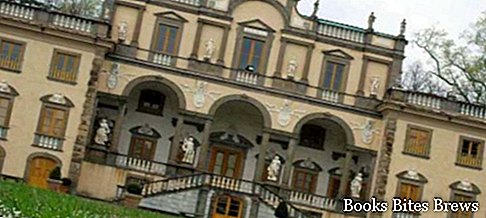The villas of Lucca can be visited by following naturalistic itineraries with paths of varying length that connect one to the other.
Tourist information
In the countryside surrounding the city there are the villas of Lucca, splendid buildings dating back to the period from the fifteenth to the nineteenth century, built by noble and wealthy merchants with solid economic and intellectual resources.
The elegant buildings are located within large parks, protected by ancient city walls and harmoniously inserted in the pleasant landscape, characterized by vineyards and olive groves.
The current ownership of the villas is, in most cases, of the descendants of the ancient families who built them, and of them, with few exceptions, only the park can be visited where, in many cases, plants and trees abound.
These stately homes are connected to each other by paved roads that can be traveled comfortably by car but, for those wishing to reach them using a bicycle or on foot, there are tourist itineraries that provide, in addition to the paved roads, also marked dirt paths and farm roads, which allow to cross the beautiful countryside of Lucca, fully savoring all the pleasant shades of colors and scents.
Which ones are they
There Royal Villa of Marlia, in its current form, it is a neoclassical work resulting from a renovation that dates back to the period in which it was owned by Elisa Bonaparte Baciocchi, Napoleon's sister, who bought it from Count Orsetti.
On that occasion an expansion was carried out by merging the land and the nearby Villa del Vescovo with the property.
At the entrance of the estate there are two symmetrical buildings that served as a barrier.
The villa is immersed in a park formed by various and spectacular gardens.
Villa Oliva, located in San Pancrazio near Villa Reale, was built on commission by the powerful Buonvisi family in the sixteenth century.
Over the course of time, various owners have followed, up to the current members of the Oliva family.
Recommended readings- Artimino (Tuscany): what to see
- San Galgano (Tuscany): what to see
- Poggibonsi (Tuscany): what to see
- Castiglione di Garfagnana (Tuscany): what to see
- Tuscany: Sunday day trips
The Villa is surrounded by a splendid park, full of very suggestive corners.
Villa Grabau, in San Pancrazio, was built on an existing building in 1412 and, towards the end of the sixteenth century, assumed the Renaissance forms which in part it has maintained, despite the important transformations that took place between the seventeenth and nineteenth centuries, which they have given a neoclassical aspect.
It was owned by the Diodati, an important Lucchese family of merchants.
The Grabau family is the current owner.
Inside the beautiful park there is a lemon house where more than 100 lemon trees are hospitalized every winter.
Villa Mansi, in the locality of Segromigno in Monte, in the sixteenth century owned by the Benedetti family, it was sold in the seventeenth century to the Cenami who, on a project by the Urbino architect Muzio Oddi, had the building enlarged and the park renovated.
Further work was carried out several times by the Mansi, in the seventeenth century already established silk merchants in Europe, owners of the villa from 1675 to 2009.
The villa, which has a beautiful and elegant mannerist façade, with a nineteenth-century park in front of it, still has traces of the eighteenth-century arrangement carried out on a project by the famous architect Filippo Juvarra.
A legend is linked to Lucida Saminiati, known as Lucida Mansi, the beautiful wife of Gaspare Mansi.
It is said that the young woman had made a pact with the devil, to whom she would have sold her soul in exchange for her youth for thirty years.
At the end of this period the devil would reappear and load Lucida on a burning chariot that, after having traveled the walls of Lucca between the heartbreaking laments of his victim and leaving a column of black smoke, would have sunk in the waters of the Orto lake botanist adjacent to the walls.
It is said that even today, on full moon nights, it is possible to see Lucida's face reflected in the waters of the pond.
Villa Torrigiani, located in the hamlet of Camigliano and dating back to the second half of the sixteenth century, originally it belonged to the powerful Bonvisi family, then it was purchased by Nicolao Santini, ambassador of the Lucca Republic to the court of Louis XIV, known as the Sun King.
The current villa, which is presented in rococo style, is the result of the renovation that took place in the seventeenth century, at the behest of Santini.
The gardens were designed inspired by the works of the great architect Le Notre, at the service of the King of France, traces of this arrangement still remain in the current garden transformed in the nineteenth century.
In 1816, following the marriage of the last heir VIttoria Santini with the Marquis Pietro Guadagni Torrigiani, the villa passed as a dowry to the Torrigiani family.




